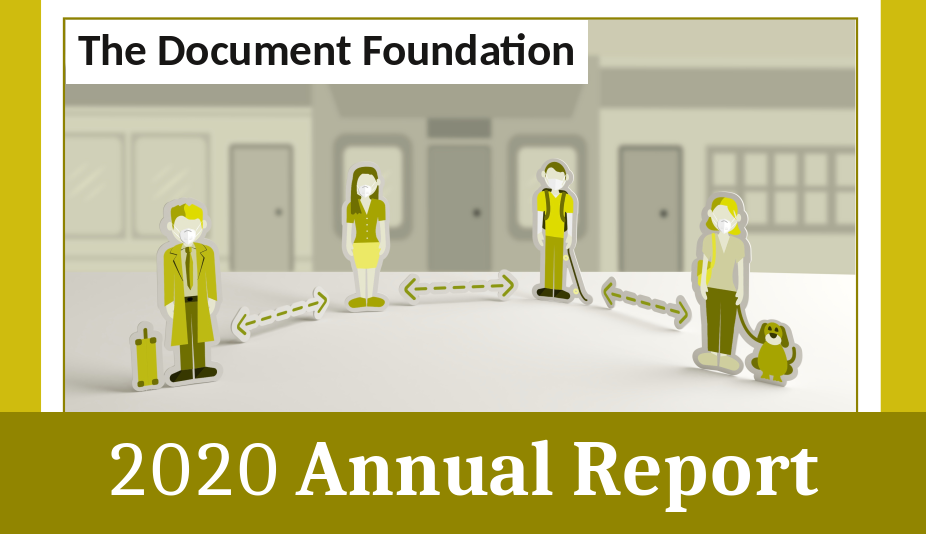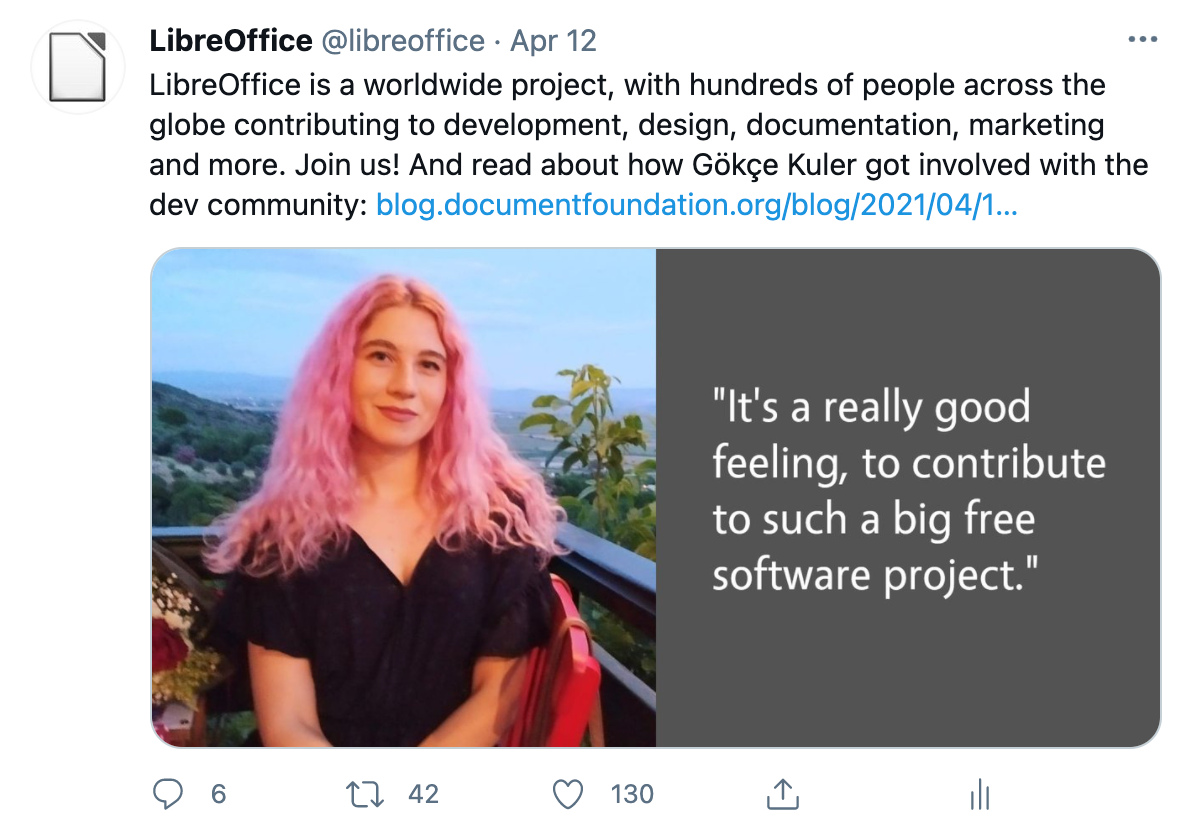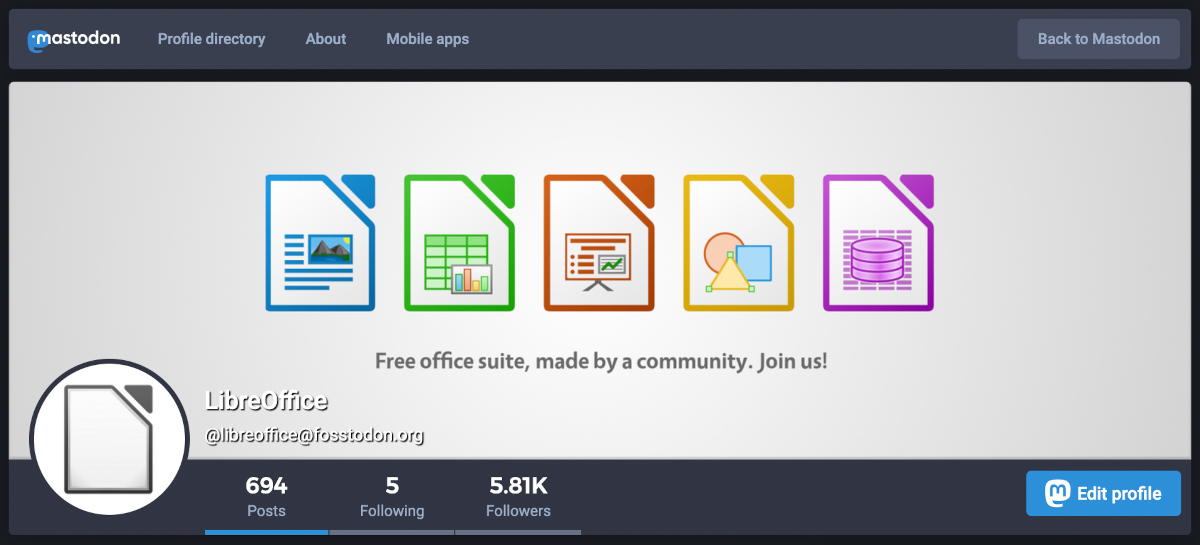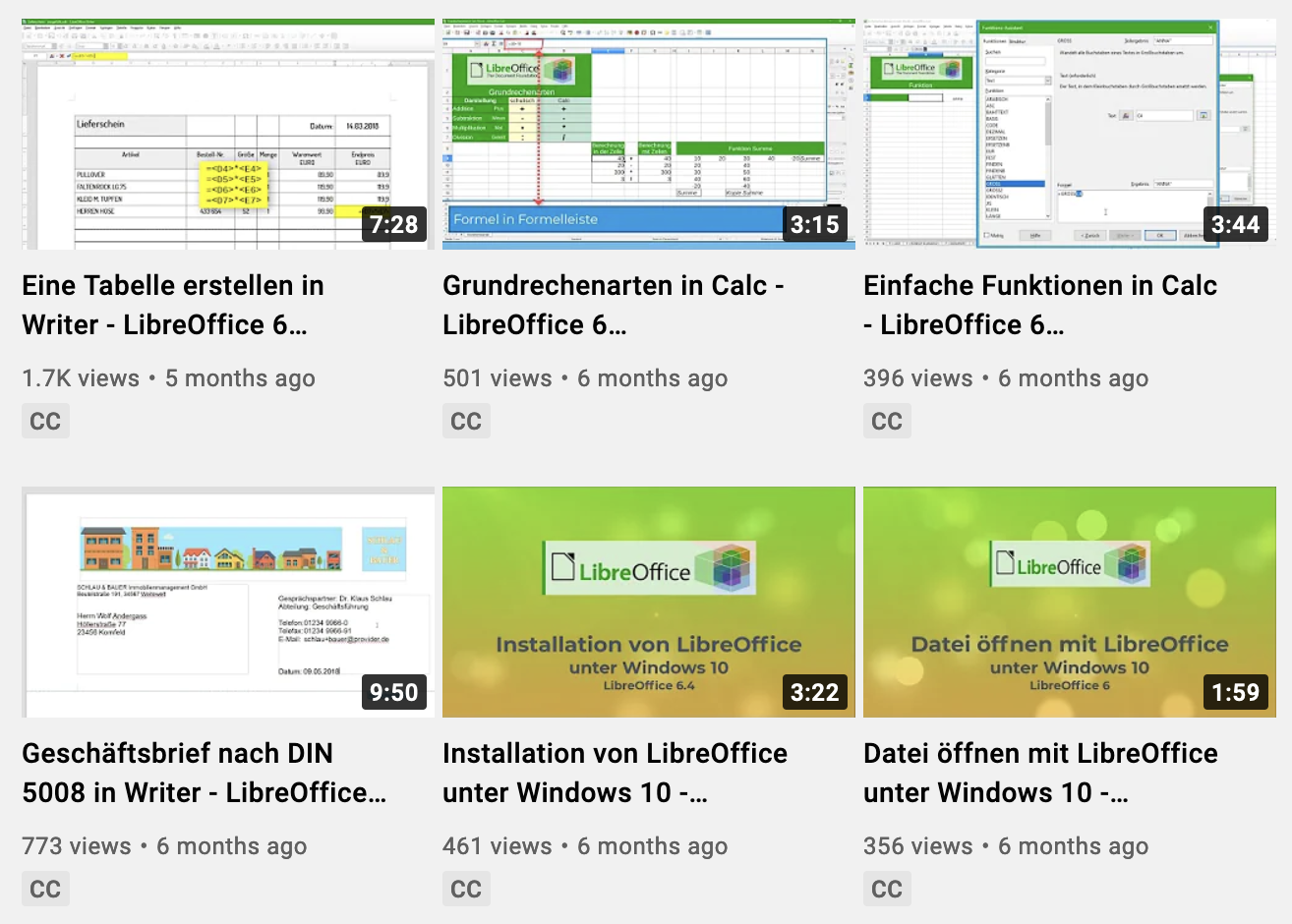
We use our website, blogs and social media channels to raise awareness about our work, share information and encourage new contributors to join the LibreOffice community
(This is part of The Document Foundation’s Annual Report for 2020 – the full version is here.)
Social media
In January 2020, our Twitter account had 29,340 followers; by the end of the year, we had grown this to 36,996. Our most popular tweets were for major releases, but we also tweeted customised images for “Community Member Monday” interviews with short quotes, encouraging more users to get involved with LibreOffice projects.

In addition, we focused not only on our own tweets, but also retweeting announcements from the LibreOffice ecosystem and community members. We liked and retweeted messages of support from end users – many of whom were surprised and thankful that a large project would show them support. To keep the content flowing, we used automatic tweeting tools to post daily LibreOffice tips, using the same content from the “Tip of the day” box in the app itself.
On other social media platforms, we focused on growing our account on Mastodon, a Twitter-like open source, federated and self-hosted microblogging service. In 2019 we set up https://fosstodon.org/@libreoffice and started “tooting” content, often more focused on technical users, compared to our tweets and Facebook posts. In 2020 we worked more on expanding our activities here, and from January to December, we grew our follower base from 3,297 to 4,879.

Our Facebook page growth was smaller, from 56,095 page likes to 58,516. We’ve noticed a gradual reduction in activity on Facebook over the last few years, which reflects its changing audience, and the move towards newer mobile applications. Nonetheless, Facebook still provides a good opportunity to interact with end users of LibreOffice, and every day we checked in to answer questions, get feedback, and post announcements/tips about the software.
YouTube channel
Our YouTube channel grew from 9,975 subscribers and 1,587,341 video views in January 2020 to 12,807 subscribers and 2,042,731 video views by the end of the year. The LibreOffice 7.0: New Features video (a fantastic production by the Indonesian community) amassed over 120,000 views – while the video for LibreOffice 6.4 had over 60,000. We also added some presentation videos from the LibreOffice Conference 2019.
Meanwhile, our community helped out with tutorial videos – in particular Harald Berger of the German community, who produced a series of professional-looking step-by-step guides to installing and using LibreOffice.

TDF website (documentfoundation.org)
The Document Foundation’s website provides general information about the foundation (overview, statutes, code of conduct, financials and reports) and its governance (board of directors, membership committee, members, advisory board, and engineering steering committee), and about LibreOffice certification, including a list of certified developers, and professionals for migrations and trainings.
During 2020, the website was visited 146,261 times, with 196,802 page views. Continent-wise, the largest chunk of visits were from Europe (57%), followed by North America (22.8%) and Asia (12.4%). And for operating systems: the most visits were from PCs using the Windows (64.1%) operating system, followed by macOs (9.2%) and GNU/Linux (9.0%), while for browsers: Chrome had (38.4%), followed by Firefox (22.1%) and Microsoft Edge (14%).
LibreOffice website (libreoffice.org)
The LibreOffice website provides information about the office suite and the document format, the various download options, how to get help, how to contribute to the project, events where users can get to know LibreOffice, and how to make a donation to support the project and the community.
In 2020, we added a language selector to the top-right bar of the website. This was implemented in response to a demand from the native language projects: many website visitors, using languages across the world, thought that the site was only available in English.

Even though we have a dedicated page listing the native language projects and their respective websites, it’s hard to find. So we added a bar at the top, with some of the most-used languages to attract attention, and a link to a page listing all language versions of the website.
Meanwhile, work progressed on a redesign of the website. LibreOffice’s current website has been largely the same for several years, and while initially it looked fresh and modern, it needs to be updated – especially to remove clutter and complexity, and work better on mobile devices. Volunteer Christine Louie helped to push this forward, and other volunteers joined in with designs and collecting feedback from users. We hope to show the results of this work in 2021.
During 2020, the English LibreOffice website was visited 19,939,066 times, with 47,589,717 page views. Most visits were from Europe (53.4%), followed by Asia (16.7%), North America (15.8%) and South America (10.3%), from PCs using the Windows operating system (83.1%), followed by macOS (6.6%) and Linux (3.7%), and the Chrome browser (49.3%), followed by Microsoft Edge (18.4%) and Firefox (17.9%).
Blogs
TDF’s blogs (such as this one) are essential for communicating activities inside and around the project, including new releases of LibreOffice, community events and support for other free and open source initiatives. In 2020, they were used to post regular interviews with community members and provide updates from team members about documentation, marketing, QA, design and more.
Blogs were also maintained by various native language communities including Japanese, French, Spanish, German and others. Thanks to the hard work of community members, we had press releases, tips and other articles translated into many languages, and picked up by local media organisations.
These native language blogs complement the information provided by the main blog in English, and by the two blogs managed by members of the design and the quality assurance projects, which provide updates about activities for the upcoming major releases.
In 2020, the blog had 184,538 page views (146,170 unique page views). The press releases for LibreOffice 6.4 and 7.0 were the most popular posts, followed by posts for minor bugfix releases.

One thought on “Annual Report 2020: Website, blogs and social media”
Comments are closed.